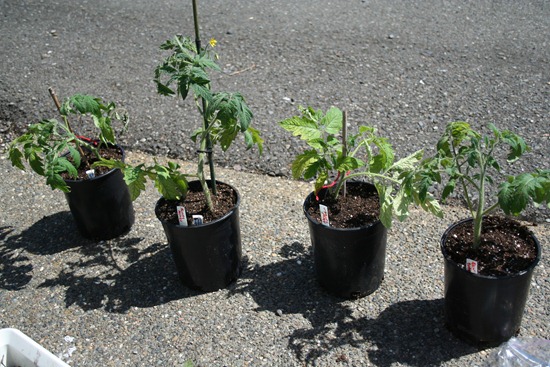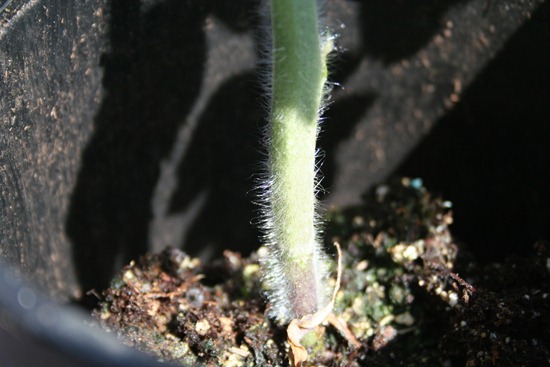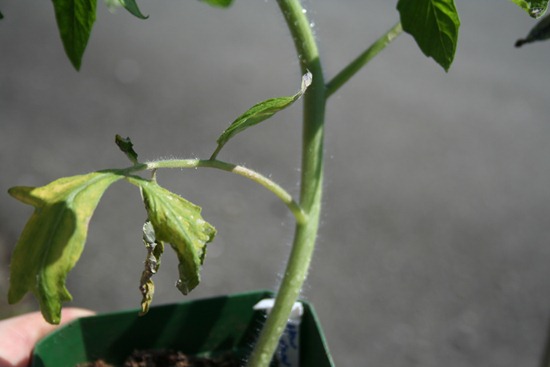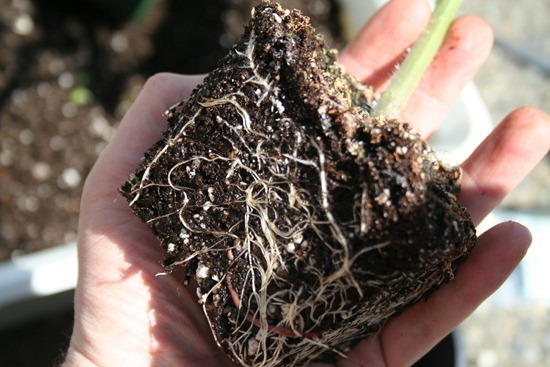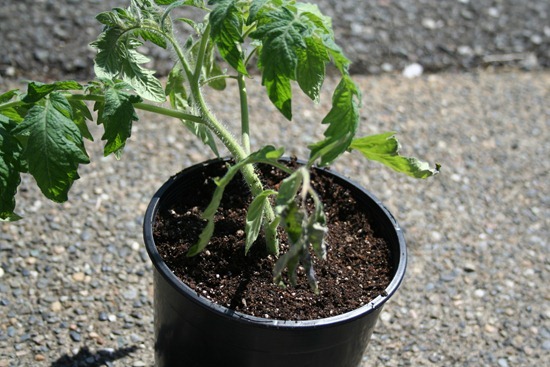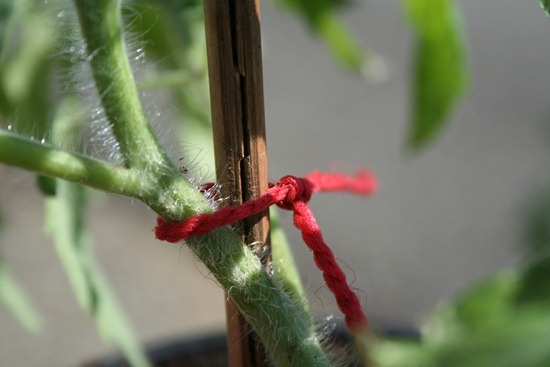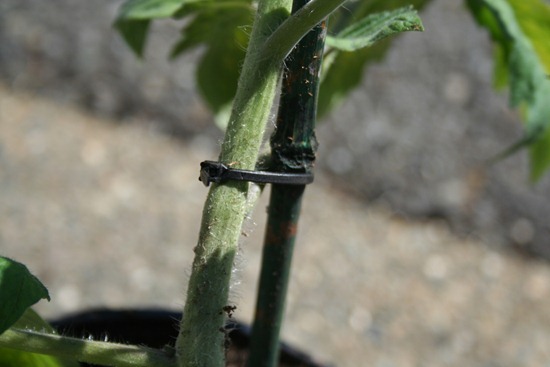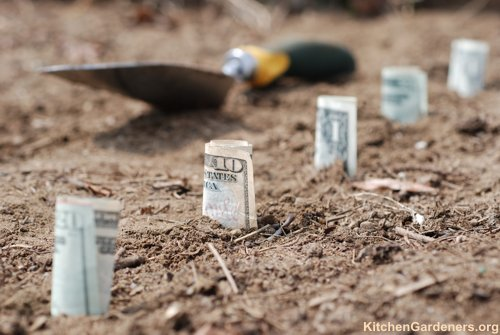When to start garden seeds indoors: Seed starting calculator
8.2 years ago cheap, indoor growbox, indoor seed starting, seedling, seeds

When you start seeds indoors in a vegetable garden, it can be difficult getting your schedule down to ensure that start your vegetable seeds with enough lead time that they are mature enough to venture outside but also not so large they take over your growing area.
Personally this has been a difficult part for me where I am really good getting the early vegetables started on time (onions, peppers, tomatoes) but when it comes to the later plants and/or second/third plantings is where I begin to get forgetful. Over the years I have come across a couple of great tools to make this easier that I thought I would share.
No matter which option you choose to start garden seeds indoors you will need to determine an important date, your last frost date. There are many sites/tables out there that will give an estimate I actually have a couple posts on the subject but at the moment my favorite site that makes this very easy is WeatherSpark, it uses historical data with great visuals to easily determine when the best probability of picking the right date. Here you can take a look at this historical data and make your call of what date you think will be safe.
1. Create a garden schedule. Just by figuring out your last frost date and doing a little math (Excel works great for this) you can determine the optimal seed starting dates and even get a general idea of when your plants should be ready for transplanting. What I love about this technique is you can tweak it each year as things worked well (or not so well) in previous years to get the schedule finely tuned to your particular garden and the micro-climates within it.
In addition knowing an estimate of when these plants will be venturing out in the wild can assist in your space planning for your seeding area as well as having a reality check if you see your peppers will be ready to be transplanted in March when it doesn’t get above freezing until mid-June.
Here is my schedule for starting seeds indoors my area and estimated last frost date (April 20th), though sure everyone that is reading this will not have the same date as mine so thanks to my infinite nerdiness I made the following table so you can adjust the “Last Frost Date” to yours and see how my schedule would look in your area.
| Last Frost Date: |
| Vegetable Name | Seed Start Date | Estimated Transplant Date |
Estimated Harvest Date |
| Celery | 1/19/2013 | 3/18/2013 | 4/24/2013 |
| Onion | 1/19/2013 | 3/25/2013 | 5/24/2013 |
| Leeks | 1/19/2013 | 3/21/2013 | 6/3/2013 |
| Kale | 1/26/2013 | 3/7/2013 | 3/22/2013 |
| Artichoke | 1/31/2013 | 4/27/2013 | 6/20/2013 |
| Kohlrabi | 2/9/2013 | 3/15/2013 | 4/5/2013 |
| Pak Choi | 2/9/2013 | 3/6/2013 | 4/10/2013 |
| Parsley | 2/8/2013 | 4/6/2013 | 4/24/2013 |
| Lettuce | 2/9/2013 | 3/6/2013 | 4/5/2013 |
| Broccoli | 2/9/2013 | 3/15/2013 | 4/20/2013 |
| Pepper – Jalapeno | 2/9/2013 | 4/28/2013 | 4/25/2013 |
| Pepper – Bell | 2/9/2013 | 5/4/2013 | 4/25/2013 |
| Swiss Chard | 2/16/2013 | 3/20/2013 | 4/7/2013 |
| Cabbage | 2/16/2013 | 3/31/2013 | 5/7/2013 |
| Brussel Sprouts | 2/22/2013 | 3/31/2013 | 5/23/2013 |
| Collards | 3/2/2013 | 3/24/2013 | 5/1/2013 |
| Tomato | 3/2/2013 | 5/4/2013 | 5/21/2013 |
| Spinach | 3/9/2013 | 4/23/2013 | |
| Peas | 3/9/2013 | 5/13/2013 | |
| Turnips | 3/9/2013 | 5/8/2013 | |
| Watermelon | 3/16/2013 | 5/27/2013 | 6/14/2013 |
| Basil | 3/24/2013 | 5/14/2013 | 6/22/2013 |
| Potatoes | 3/30/2013 | 7/8/2013 | |
| Radish | 3/31/2013 | 5/5/2013 | |
| Beets | 3/31/2013 | 6/4/2013 | |
| Carrots | 4/9/2013 | 6/23/2013 | |
| Corn | 4/9/2013 | 5/7/2013 | 6/28/2013 |
| Cucumber | 4/9/2013 | 5/16/2013 | 6/8/2013 |
| Okra | 4/9/2013 | 5/11/2013 | 6/13/2013 |
| Pumpkin | 4/9/2013 | 5/7/2013 | 7/28/2013 |
| Summer Squash – Sunburst | 4/9/2013 | 5/16/2013 | 6/3/2013 |
| Winter Squash – Hunter | 4/9/2013 | 5/16/2013 | 7/3/2013 |
| Zucchini | 4/9/2013 | 5/16/2013 | 6/3/2013 |
| Lettuce | 4/13/2013 | 6/7/2013 | |
| Beans | 5/4/2013 | 7/13/2013 | |
| Dill | 5/11/2013 | 7/15/2013 | |
| Carrots | 5/27/2013 | 8/10/2013 | |
| Broccoli | 6/22/2013 | 8/2/2013 | 8/31/2013 |
| Cabbage | 6/22/2013 | 8/2/2013 | 9/10/2013 |
| Kale | 6/22/2013 | 7/22/2013 | 8/16/2013 |
| Kohlrabi | 6/22/2013 | 7/29/2013 | 8/16/2013 |
| Cabbage – Napa | 7/24/2013 | 8/21/2013 | 10/7/2013 |
| Pak Choi | 7/24/2013 | 8/21/2013 | 9/22/2013 |
| Onion – Bunching | 7/24/2013 | 10/2/2013 | |
| Turnip | 7/24/2013 | 9/22/2013 | |
| Lettuce | 8/3/2013 | 9/27/2013 | |
| Spinach | 8/10/2013 | 9/24/2013 | |
| Corn Salad | 8/10/2013 | 9/29/2013 | |
| Garlic | 10/12/2013 | 2/14/2014 | |
| Pak Choi | 12/14/2013 | 1/26/2014 | 2/12/2014 |
* N/A because vegetables should be sown directly in the ground.
2. Create a garden plan online and get reminders. My favorite online vegetable gardening software is GrowVeg. It is very easy to use and provides some great visuals when to specifically plant seeds and transplant your seedlings outdoors, which you can see below.
In addition you also can recreate a virtual copy of your garden and plan exactly where you want to plant your vegetables, to ensure your ambitions for growing a huge crop this year does not exceed the reality of the limited space you have to actually grow. It also remembers where you planted vegetables in previous years to help enforce crop rotation to ensure pests/diseases will be forced to remain in check.
Though one of my favorite features is the weekly reminders, once a week you get a simple email letting you know what plants you should be starting/transplanting that week. This was very helpful later in the season where I probably would have completely forgotten about my carrots without this helpful reminder.
3. Buy a garden planning book. If you want something that you can really get your hands on you might want to check out the Week-by-Week Vegetable Gardener’s Handbook helps with this problem by providing weekly reminders of what vegetables you should be order/planting and what preparations you should be doing in your garden. This can be a very helpful tool in getting a little more organized in your vegetable garden.
Already falling behind on your seed planting here are a few great options to get a great selection of seeds without spending a lot of money:
- One of my favorites is Burpee Seeds, they have been around since 1876 and definitely know their stuff. The actually have a seed sale going on now where you get $15 off on order of $75 (just use code AFFB4A35) expires on 1/15
.
- The name is not too exciting but Generic Seeds
offers no thrills packaging with quality seeds and very reasonable prices and if you spend $20 or more shipping is on them.
New way to use egg cartons for starting seeds
10.2 years ago cheap, indoor seed starting, planter, seedling
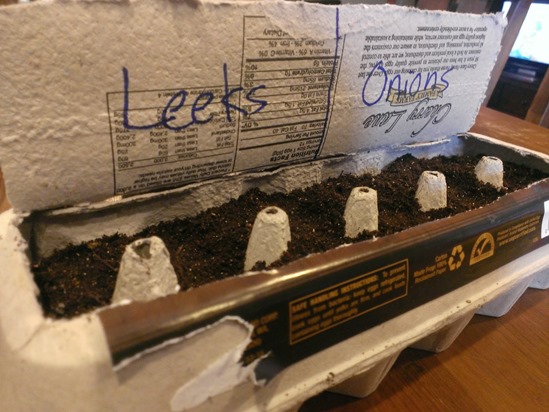
I have used egg cartons to plant seedlings before but here is a slight twist, instead of taking the whole lid off I cut the top off the lid. This not only gives you a neat place to label your seeds but more importantly, it provides an extra inch of depth for your seedlings to get a running start before being transplanted to your garden.
Beware of toddlers and seeds
11 years ago carrot, kids, seedling

Tip to gardeners with two year olds, don’t keep you seeds on the counter within some little hands reach. I was at least happy she was nice enough to bring the seeds from the kitchen counter to the kitchen table to open and pour them out…much easier to clean up than rubbed into the carpet.
Happy seed starting…
How to repot tomato seedlings
13 years ago indoor seed starting, repot, seedling, tomato
When growing tomatoes from seed you are going to have to repot them. The basic idea is you never want to stress the plant out by restricting the roots from getting wider. Fortunately the process to do this between the various growth states is pretty simple and does not really change much between repotting.
The first time you will need to repot them to a 4 inch put when the seedlings you initially planted get about 4 inches tall using the same steps I mention in detail below.
Once the tomato plant begins to grow wider than the pot (I was a couple weeks late below) or about 7-8 inches tall this is a good time to move up to a gallon planting container.
Now you may be asking, “Hey Mr. Cheap Vegetable Gardener, those fancy generic nursery containers are expensive. I have seen them for almost $2.00 each at my local home improvement store.” Funny you asked, I picked up a bunch of these while going for a walk with my kids that someone dumped as garbage…so I stocked up.
Step 1: The Soil: Given I have quite a bit more volume to fill I modify my seedling mixture from 2 parts coconut coir (or peat moss) and 1 part perlite to 1 part coconut coir (or peat moss), 1 part perlite, and 1 part soil from my garden. This is for no other reason other than I am cheap and bagged soils can be expensive. I also add a thin layer of bone meal and a little sprinkling of eggshells to provide a boost of calcium and Phosphorous. I also add a little water to and mix until well incorporated
Step 2: Fill the bottom: You are only going to want to put about 1.5 inches of soil in the bottom of your 1 gallon nursery planter. I will explain why we are putting so little shortly.
Tomatoes have a special ability to grow roots out of its stem due to the fact that it has these little white hairs growing out of it (see below) When these are planted below the surface it will allow you to make a much stronger root system to your plants and a much more vigorous tomato plant.
Step 3: Remove leaves from plant: To take advantage of extra root growth and any leaves that will be buried are not going to help the plant anymore so remove this with knife/pruners or your fingernails in a pinch (pun intended)
Step 4: Remove plant from previous container: Tomatoes are pretty tough for transplanting but you do want to take some care to not shock the plant during this removal. It advisable for the roots to be moist but not soaking wet so the root ball comes out easily but not so wet that all the supporting dirt falls away when removed. If you have some problems removing the plant try gentle inserting a butter knife around the edges to loosen its grip.
Step 5: Fill with soil: Fill the plant all the way to the top with soil pack down lightly and repeat until you have some firm soil up to the top of your plant.
Step 6: Stake your plant (Optional). If your plant is looking a bit unstable like the one above I like to take one of the cheapest bamboo stakes I can buy (sticks from the yard would also work) and cut them to 12 inch length and press them about 1 inch away from the plant. Now simply attach with whatever you can find handy close to you. Some classics are plant tie tape, twist-ties, reusable Velcro straps, yarn, and twine. Today I happened to find a piece of yarn on the floor of my garage and a couple zip ties so I put them to good use. You want these tight enough to support the plant but still loose enough to allow the plant to grow.
No matter how careful you are the plant will go through some shock during this ordeal and probably will look a little sick for a day or two but should bounce back shortly after that and continue expanding with its newly added space.
The most profitable plants in your vegetable garden
15.3 years ago cheap, cilantro, garlic bulbs, organic, seedling, seeds, vertical gardening, winter garden
Many vegetables can be expensive to purchase by growing the most expensive vegetables in your garden and buying the least inexpensive vegetables at your grocery store you can easily help drop your food budget. This especially important for people like me with very limited space to grow everything that I consume.
It may be impossible to put a price on the satisfaction of bringing in a basket of produce fresh from your garden. As well as the enhanced flavors from having truly fresh produce from your garden compared to that of your local supermarket. Though when I was harvesting my potatoes this summer with my daughter I did have the thought, Would it have been smarter for me to grow something else in this space? I estimate out of the 4-5 square feet I used for these plants I probably got about $4-5 worth of potatoes.
I did a little research first to determine yields of various plants per square foot and secondly what the value (organic supermarket prices USD) of the yielded produce at harvest. Given I am a city dweller with a fairly small footprint for my vegetable garden (about 30-35 square feet) making decisions on what to buy at the supermarket and what to grow in the garden may be a huge money saver with just a few dollars invested in some seeds for your vegetable garden
Now from the results below you can see the winners for the most produce value per square foot are many of the leafy green vegetables/herbs (cilantro, lettuce, chives, dill, Swiss chard) next comes many of the larger vine plants (tomatoes, squash, pumpkins, peas) with many of the root plants taking up the rear. Now much of this makes sense where many of the vine plants grow on trellises and are allowed to spread, which I guess is sort of cheating the square foot rule but I will let it slide. Compared to the root plants whose production is entirely dependent on the space allowed in square footage they have to grow as well as these are normally inexpensive produce items to begin with.
| Vegetable | USD Value/SF |
| Cilantro | $ 21.20 |
| Arugula-Roquette | $ 20.92 |
| Green Salad Mix | $ 17.55 |
| Chives | $ 16.40 |
| Dill | $ 16.40 |
| Lettuce | $ 16.20 |
| Tomato, Cherry, small & medium | $ 15.57 |
| Turnip | $ 9.90 |
| Tomato, large | $ 9.50 |
| Squash, Winter | $ 8.40 |
| Tomatillo | $ 8.00 |
| Cucumber | $ 7.74 |
| Basil | $ 6.63 |
| Radish, Red | $ 6.22 |
| Pumpkin | $ 6.20 |
| Chard, Swiss | $ 6.14 |
| Celery | $ 6.00 |
| Squash, Summer | $ 5.96 |
| Choi | $ 5.70 |
| Peas, Snow | $ 4.50 |
| Pepper, Jalapeno | $ 4.50 |
| Squash, Summer, Zucchini | $ 4.17 |
| Onion, Bunching | $ 4.14 |
| Pepper, Bell | $ 3.60 |
| Brussels Sprouts | $ 3.59 |
| Carrots | $ 3.56 |
| Rhubarb | $ 3.25 |
| Squash, Winter, Butternut | $ 3.20 |
| Kale | $ 3.07 |
| Grass, Lemon | $ 3.00 |
| Peas, English | $ 3.00 |
| Onion, Bulb | $ 2.63 |
| Radish, White | $ 2.60 |
| Bean, Bush | $ 2.51 |
| Peas, Edible Pod | $ 2.50 |
| Artichoke, Globe | $ 2.40 |
| Cabbage, Chinese Napa | $ 2.24 |
| Squash, Winter, Delicata | $ 2.10 |
| Spinach, Spring/Fall | $ 1.80 |
| Leeks | $ 1.75 |
| Potatoes | $ 1.50 |
| Parsnips | $ 1.50 |
| Garlic | $ 1.37 |
| Squash, Summer, Yellow | $ 1.34 |
| Parsley | $ 1.31 |
| Corn | $ 1.25 |
| Squash, Winter, Acorn | $ 1.20 |
| Squash, Winter, Hubbard | $ 1.20 |
| Eggplant | $ 1.10 |
| Greens, Mustard | $ 1.10 |
| Rutabaga | $ 1.00 |
| Beet | $ 0.89 |
| Cabbage, Savoy | $ 0.80 |
| Broccoli | $ 0.80 |
| Kohlrabi | $ 0.75 |
| Cauliflower | $ 0.60 |
| Broccoli, Chinese | $ 0.60 |
| Cabbage | $ 0.50 |
Sources: http://www.mcgoodwin.net/pages/ppatch.html for plant yield information, http://shop.safeway.com for current produce prices
Now even with this information I will still plan on growing some onions and garlic since I more than likely would be forced to use dehydrated alternatives due to being too lazy to drive to the supermarket to buy fresh varieties. Though I may be adding some more herbs/greens to my garden this year.
One important thing to remember is you still have to eat the vegetables, throwing $20 worth or arugula or cilantro into the compost bin is not exactly a sound investment. You can also get higher yields by growing vertically, but don’t forget those tall plants produce a larger shadow so you may still need some extra ground space to support these alternate growing methods.
So go out and get some cheap vegetable seeds (or in many cases free) and plant some profitable vegetables in your backyard/patio garden this spring.
Tags: cilantro, compost, garlic bulbs, herb garden, organic vegetables, outdoor plants, pepper plants, tomato plants, vegetables




